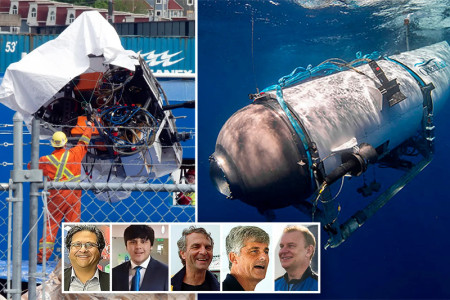The presumed remains will be analysed by US medical professionals, said a statement issued by the US Coast Guard. The debris was recovered from St. John’s in Newfoundland on Wednesday.
The statement added that the evidence will provide investigators with critical insights into the cause of the tragedy. "There is still a substantial amount of work to be done to understand the factors that led to the catastrophic loss of the Titan and help ensure a similar tragedy does not occur again," said Jason Neubauer, a chair captain with the Marine Board of Investigation.
The recovery was made by the Canadian ship Horizon Arctic using a remotely operated vehicle (ROV). The ROV searched the ocean floor near the Titanic wreck for pieces of the submersible following which mangled chunks of the 22-foot submersible were found. They were later unloaded at a Canadian Coast Guard pier.
Images from the location showed a white panel-like piece and another object with cords and wires dangling from it being moved to the shore. The objects were covered using a white tarp. Reports said the debris was Titan’s white hull and landing skids. Coast Guard representatives declined to comment on the investigation or the return of debris to shore on Wednesday.
According to Pelagic Research Services, the company that owns the ROV that recovered Titan’s remains, the team is still on the mission. "They have been working around the clock now for ten days, through the physical and mental challenges of this operation, and are anxious to finish the mission and return to their loved ones," Jeff Mahoney, a spokesperson for the company.
The investigation into the tragedy is being conducted by a Marine Board of Investigation, convened by the Coast Guard. The Board will also offer suggestions on whether or not to "pursue civil or criminal sanctions as necessary."
Meanwhile, one of the experts the Coast Guard consulted with during the search said the analysis of the debris could reveal important clues about what happened to the Titan. "And there could be electronic data," Carl Hartsfield of the Woods Hole Oceanographic Institution told The Guardian, adding that all the instruments on any deep sea vehicle record data. "They pass up data. So the question is, is there any data available?" he said.
Titan, owned by Ocean Gate, embarked on a voyage to explore the remains of Titanic on June 18. But, it lost contact with the mother ship, Polar Prince, about an hour and 45 minutes into its dive. A massive search was launched, following which it was found that the vessel had imploded.
Ocean Gate CEO and pilot Stockton Rush was killed in the implosion along with two members of a prominent Pakistani family, Shahzada Dawood and his son Suleman Dawood; British adventurer Hamish Harding; and Titanic expert Paul-Henri Nargeolet.
(theweek)


